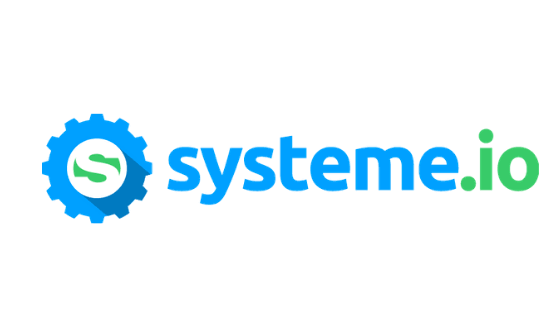Email marketing is a powerful tool for businesses to connect with their audience, build brand awareness, and drive sales. It involves sending commercial messages to a group of people using email. This form of marketing allows businesses to reach a large number of potential customers at a relatively low cost compared to other forms of marketing. Email marketing can be used to promote products, share company news, provide valuable content, and more.
One of the key benefits of email marketing is its ability to reach a targeted audience. By segmenting your email list and personalizing your messages, you can tailor your content to specific groups of people based on their interests, behaviors, and demographics. This can lead to higher engagement and conversion rates. Additionally, email marketing allows for easy tracking and analysis of campaign performance, providing valuable insights into what resonates with your audience and what doesn’t. With the right strategies and best practices in place, email marketing can be a highly effective tool for driving business growth.
Building an Email List
Building a quality email list is essential for successful email marketing. There are several strategies businesses can use to grow their email list, including creating compelling opt-in forms on their website, offering valuable incentives such as discounts or free resources in exchange for email sign-ups, and leveraging social media and other digital channels to drive traffic to their opt-in forms. It’s important to focus on attracting subscribers who are genuinely interested in your brand and what you have to offer, as a large, engaged email list is more valuable than a large, unengaged one.
Once you have a solid email list in place, it’s important to regularly clean and maintain it to ensure that your messages are reaching the right people. This involves regularly removing inactive subscribers, updating contact information, and ensuring compliance with data privacy regulations such as GDPR and CAN-SPAM. By continuously growing and maintaining a high-quality email list, businesses can ensure that their email marketing efforts are reaching the right audience and driving meaningful results.
Crafting Effective Email Campaigns
Crafting effective email campaigns involves creating compelling content that resonates with your audience and drives action. This includes writing attention-grabbing subject lines, designing visually appealing and mobile-responsive email templates, and including clear calls-to-action that encourage recipients to take the desired next step. It’s important to consider the customer journey and where each recipient is in the buying process when crafting your email campaigns, as this will help you tailor your content to their specific needs and interests.
In addition to the content itself, the timing and frequency of your email campaigns also play a crucial role in their effectiveness. Sending emails at the right time can significantly impact open and click-through rates, so it’s important to test different send times and analyze the results to determine the optimal schedule for your audience. Furthermore, it’s important to strike a balance between staying top-of-mind with your audience and avoiding overwhelming them with too many emails. By carefully crafting and timing your email campaigns, you can maximize their impact and drive meaningful results for your business.
Personalization and Segmentation
Personalization and segmentation are key components of successful email marketing. By personalizing your emails based on recipient data such as name, location, or past purchase history, you can create a more tailored and relevant experience for your audience. This can lead to higher engagement and conversion rates, as recipients are more likely to respond positively to content that feels personalized to their needs and interests. Additionally, segmentation allows you to divide your email list into smaller, more targeted groups based on specific criteria such as demographics, behaviors, or interests. This enables you to send more relevant content to each segment, further increasing the likelihood of engagement and conversion.
There are several ways businesses can personalize and segment their email campaigns. This includes using dynamic content that changes based on recipient data, creating targeted email campaigns for specific segments of your audience, and leveraging automation tools to deliver personalized messages at scale. By incorporating personalization and segmentation into your email marketing strategy, you can create more meaningful connections with your audience and drive better results for your business.
Automation and Drip Campaigns
Automation and drip campaigns are powerful tools for streamlining and optimizing your email marketing efforts. Automation allows businesses to set up triggered emails that are sent automatically based on specific actions or events, such as a new subscriber joining your list or a customer making a purchase. This can help businesses stay engaged with their audience without requiring manual intervention for each individual email. Drip campaigns, on the other hand, involve sending a series of pre-written emails over a period of time, often with the goal of nurturing leads or guiding recipients through a specific process or journey.
By leveraging automation and drip campaigns, businesses can save time and resources while delivering timely and relevant content to their audience. This can help nurture leads through the sales funnel, re-engage inactive subscribers, or deliver targeted content based on specific behaviors or interests. Additionally, automation allows for easy tracking and analysis of campaign performance, providing valuable insights into what’s working and what’s not. By incorporating automation and drip campaigns into your email marketing strategy, you can create more efficient and effective campaigns that drive meaningful results for your business.
Analyzing and Optimizing Email Performance
Analyzing and optimizing email performance is crucial for maximizing the impact of your email marketing efforts. By regularly tracking key metrics such as open rates, click-through rates, conversion rates, and unsubscribe rates, businesses can gain valuable insights into how their emails are performing and where there may be opportunities for improvement. This data can help businesses understand what resonates with their audience, identify areas for optimization, and make informed decisions about future email campaigns.
In addition to tracking key metrics, A/B testing is a valuable tool for optimizing email performance. By testing different elements of your emails such as subject lines, calls-to-action, or content variations, businesses can determine which approaches are most effective at driving engagement and conversion. This iterative approach allows businesses to continuously improve their email campaigns over time, leading to better results and a higher return on investment.
Best Practices for Email Marketing Success
There are several best practices that businesses can follow to ensure success with their email marketing efforts. This includes obtaining explicit permission from recipients before sending them commercial emails, providing clear opt-out options in every email, and ensuring compliance with data privacy regulations such as GDPR and CAN-SPAM. It’s also important to focus on delivering value to your audience through relevant and engaging content that meets their needs and interests.
Furthermore, it’s important to regularly test different elements of your email campaigns such as subject lines, calls-to-action, and send times to determine what resonates best with your audience. By continuously analyzing performance data and making informed decisions based on the results, businesses can optimize their email marketing efforts for maximum impact.
In conclusion, email marketing is a powerful tool for businesses to connect with their audience, build brand awareness, and drive sales. By focusing on building a quality email list, crafting effective email campaigns, personalizing and segmenting content, leveraging automation and drip campaigns, analyzing performance data, and following best practices for success, businesses can create more meaningful connections with their audience and drive better results for their business. With the right strategies in place, email marketing can be a highly effective tool for driving business growth in today’s digital landscape.



